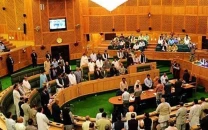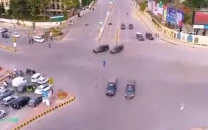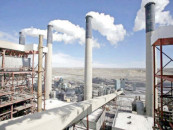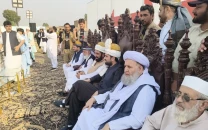Built at the advent of Islam in the subcontinent, buried by us humans
After floods and rains, teams plan to conserve the world’s largest necropolis at Makli.

Built at the advent of Islam in the subcontinent, buried by us humans
Last year, when the floods displaced millions of people in Sindh, the graveyards and tombs of ancient noblemen, saints and scholars at Makli Hill turned into a resting place, albeit temporary, for the living. Approximately 35,000 displaced people surged to the necropolis to take refuge. As feared, this human activity took its toll on the heritage site.
Now, in order to study the damage caused by this influx, and the recent rains, the Heritage Foundation dispatched its teams to the 10 sq km site.
“The conditions are very poor,” said Yasmeen Lari, who is the chief executive and chair of the foundation. According to her, of the several clusters from four historic periods, only some were identifiable while the others were anonymous. “Without further investigation into historical records, it is not possible to determine their antecedents,” she said.
Less than half of the structures, which are in varying stages of destruction and damage, are mentioned in historical records. The original list that was prepared when the world heritage list was made, does not cover all the structures that still exist.
During the work, the team discovered that instead of the 28 structures marked by the federal department of archaeology, there were actually 33 others that needed immediate conservation. Thus, the study is focusing on a total of 61 monuments.
“We found that a conservation strategy could not be developed because of a lack of systematic recording and baseline data,” Lari said. But they did manage to record GPS coordinates and a photo catalogue for a majority of the structures for the first time ever.
The pictorial catalogue is divided into structures belonging to the four historic dynasties, ie, Samma Period (14-16C), Arghun Period (early 16th to mid-16th C.), Tarkhan Period (mid 16th to late 16th C.) and the Mughal Period (early 17th to early 18th C.) These structures are now part of the National Register of World Heritage Sites of Pakistan, as part of the series that the Heritage Foundation developed for the Lahore Fort World Heritage Site.
The Heritage Foundation started by numbering all of the structures, based on a system that has been developed for World Heritage Sites. The open-ended numbering provides each historic structure a unique number which reflects its period and chronological order. Also, GPS coordinates help you search for each historic structure.
The ‘Heritage Audit of WHS 4 Thatta’ team worked for three months. They photographed all of the structures, searched the records with the Department of Archaeology or published information and measured the effect of the recent disaster. The Prince Claus Fund had also requested identification on one historic structure that it could then support. In the end it decided on the tomb of Samma Noble I to stablise and conserve.
The tomb of Samma Noble I is visible from a remarkable distance on Makli Hill. It is believed that this person was of significantly high stature to be placed close to the tomb of the famous ruler Jam Nizamuddin, as well as the Jamia Masjid and the tomb of the Sufi saint Shaikh Hammad Jamali. But is now the most degraded structure in the whole necropolis.
“The size of the structure and the elaborate methodology, using half vault squinches to make the base for a large cupola, all point towards the importance of the personality for whom the tomb was constructed,” explained Lari.
After collapse of its enclosure, the structure is exposed to the ravages of humanity and nature.
The extent of deterioration was assessed by the Heritage Foundation that compared the photographs taken in the 1980s by Suhail Z. Lari and Yasmeen Lari for the book “The Jewel of Sindh: Samma Monuments on Makli Hill”. Pooled rainwater has eroded the base of the walls, putting it at risk of collapse.
One of the 16 structures in Samma cluster, this tomb was listed during the 1950s.
Historically, it is among the first brick tombs that were built in the necropolis. It is widely accepted by historians as among the earliest structures to be built in Thatta, barring Jamia Masjid and the tomb of Saint Hammad Jamali that also portray the transitional period at the advent of Islam.
At this time large-scale conversion to Islam was accomplished through the message of tolerance and peace conveyed by the Sufi saints. The saints arrived in the train of Muslim conquerors, and established their hermitages and monasteries at the necropolis. Thus, Samma builders started to use construction techniques that employed arches, vaults, squinches and domes.
Published in The Express Tribune, August 22nd, 2011.

















1727268465-0/Untitled-design-(42)1727268465-0-208x130.webp)

COMMENTS
Comments are moderated and generally will be posted if they are on-topic and not abusive.
For more information, please see our Comments FAQ